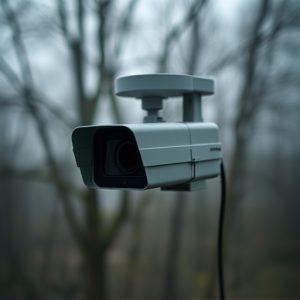Unveiling Hidden Cameras: Discreet Surveillance & Realistic Decoys
In today's digital age, privacy concerns are rising, making discreet surveillance techniques vi…….
In today's digital age, privacy concerns are rising, making discreet surveillance techniques vital. Ethical and legal hidden surveillance devices offer insights while maintaining secrecy, ideal for high-risk scenarios. Manufacturers have developed highly realistic decoys like fake power outlets and mirror-mounted cameras to counter the challenge of detection. Knowing common placement spots is crucial; these decoys enhance security by misleading intruders and deterring malicious behavior in public spaces, balancing security needs with privacy rights.
Hidden surveillance devices can be a subtle yet pervasive presence in our daily lives. This article explores the nuanced world of discreet camera placement, focusing on common spots where they’re often concealed. From understanding the importance of covert surveillance to uncovering advanced security decoys that mimic everyday objects, we delve into effective strategies for detection and the legal considerations shaping privacy rights. Discover the most realistic-looking security decoys available to enhance your awareness in today’s world.
- Understanding the Importance of Discreet Surveillance
- Common Areas for Hidden Camera Placement
- Advanced Security Decoys: Uncovering Realistic Options
- Strategies to Detect and Avoid Hidden Cameras
- Legal Considerations and Privacy Rights
Understanding the Importance of Discreet Surveillance
In today’s digital age, where privacy is a growing concern, understanding the art of discreet surveillance is paramount. Hidden surveillance devices, when used ethically and legally, offer valuable insights while maintaining an element of secrecy. The ability to monitor areas without drawing attention ensures security measures remain unnoticeable, making them ideal for high-risk environments or situations requiring long-term observation.
One of the key challenges in surveillance is creating realistic decoys that blend seamlessly into their surroundings. Manufacturers have developed the most realistic-looking security decoys to address this need. These devices mimic everyday objects like power outlets, fire alarms, or even potted plants, making it nearly impossible for individuals to discern their true purpose, thereby enhancing privacy and security measures significantly.
Common Areas for Hidden Camera Placement
In the quest to safeguard privacy, understanding common areas for hidden camera placement is paramount. Unsuspecting individuals often overlook these spots where sophisticated surveillance devices can be concealed. One of the most prevalent and realistic looking security decoys is the fake power outlet. These mimic genuine outlets, blending seamlessly into walls, offering an innocent appearance while housing a hidden camera. Another frequent location is behind mirrors or pictures; a mirror-mounted camera can capture activity without drawing attention.
Furniture items like lamps or books also serve as excellent hiding places. Cameras integrated into these objects can remain undetected, capturing footage discreetly. Furthermore, ceiling fans and light fixtures have been exploited for hidden surveillance, with cameras strategically placed to monitor activities below without raising suspicion. These seemingly innocuous locations highlight the need for heightened awareness regarding potential hidden camera setups.
Advanced Security Decoys: Uncovering Realistic Options
In today’s digital age, advanced security decoys have emerged as a sophisticated way to protect sensitive spaces. These realistic-looking devices are designed to fool even the most discerning eye, making them an invaluable tool for enhancing privacy and safety. From fake cameras to convincing dummy drones, the market offers a plethora of options that can be seamlessly integrated into various environments without drawing attention.
The most realistic looking security decoys often incorporate intricate details, such as LED lights that mimic real camera flashes or advanced materials that replicate the feel and appearance of actual equipment. These decoys not only serve as effective deterrents but also provide a layer of protection by misleading potential intruders, giving valuable time for alarm systems to be activated or authorities to be notified.
Strategies to Detect and Avoid Hidden Cameras
Detecting hidden surveillance devices requires a keen eye for detail and knowledge of common tactics used by installers. One of the best strategies is to inspect areas where cameras are most likely to be hidden, such as behind clocks, pictures frames, and electrical outlets. Using realistic-looking security decoys can be an effective countermeasure; these include fake cameras, motion sensors, and other devices designed to mislead potential intruders or surveillance installers.
Additionally, employing advanced technology like thermal imaging cameras and infrared detectors can aid in uncovering hidden devices that are difficult to spot with the naked eye. Regular maintenance and checks of your home or office space are crucial, as are keeping personal items and decorations secure to prevent tampering. Staying vigilant and proactive is key to avoiding the installation of hidden surveillance equipment.
Legal Considerations and Privacy Rights
The use of hidden surveillance devices raises significant legal and ethical questions, especially regarding privacy rights. In many jurisdictions, placing cameras or microphones in private spaces without consent is a clear violation of civil liberties. However, when used responsibly and in public areas, these devices can serve as powerful deterrents for criminal activities. The key lies in balancing security needs with individual freedoms.
One of the most effective strategies to address this concern is employing the most realistic looking security decoys. These mimic real cameras or microphones but are designed to be non-functional, acting as a psychological barrier. By strategically placing these decoys in common spots where surveillance might be expected, individuals can feel safer without compromising their privacy. This approach leverages technology to create an environment that discourages malicious behavior while respecting the right to privacy.
In the ever-evolving landscape of surveillance technology, understanding common hidden camera placement spots is paramount for privacy protection. By familiarizing ourselves with areas like smoke detectors, clock radios, and even door frames where devices might be concealed, we can employ effective strategies to detect and avoid hidden cameras. Additionally, leveraging advanced security decoys, such as the most realistic-looking options available today, can serve as powerful tools to deter potential intruders. However, it’s crucial to balance these measures with legal considerations and respect for privacy rights, ensuring that our efforts remain within ethical boundaries.


